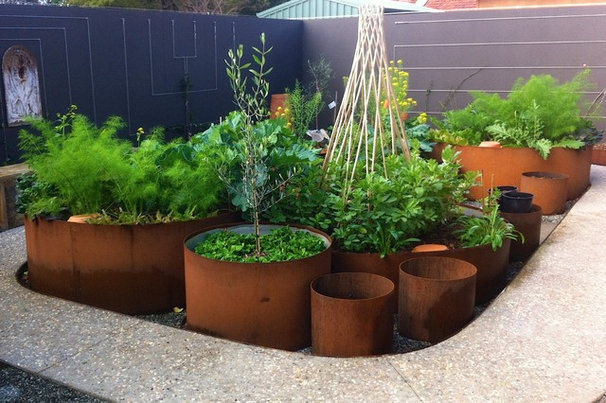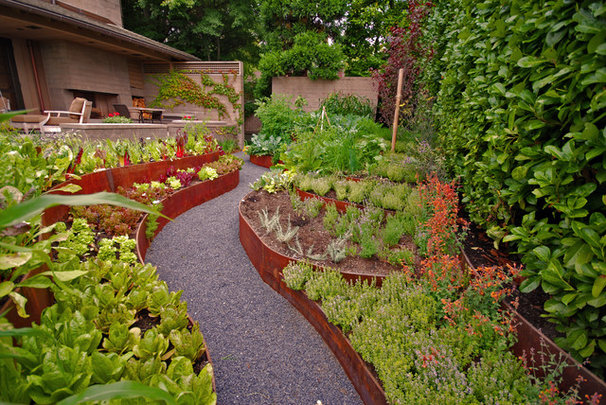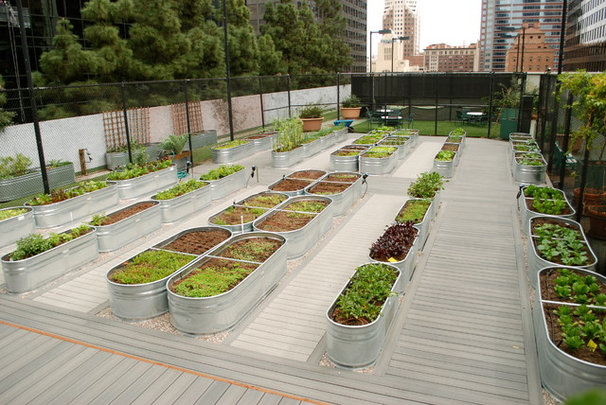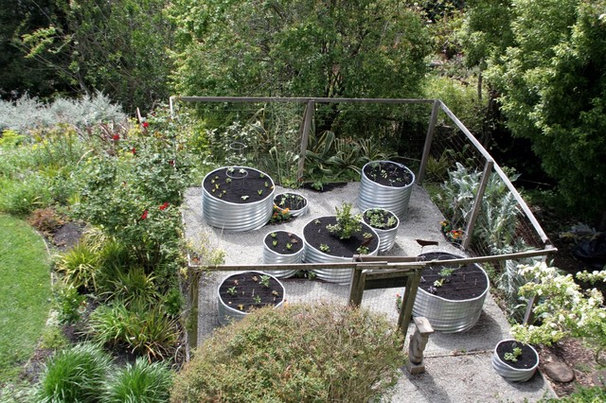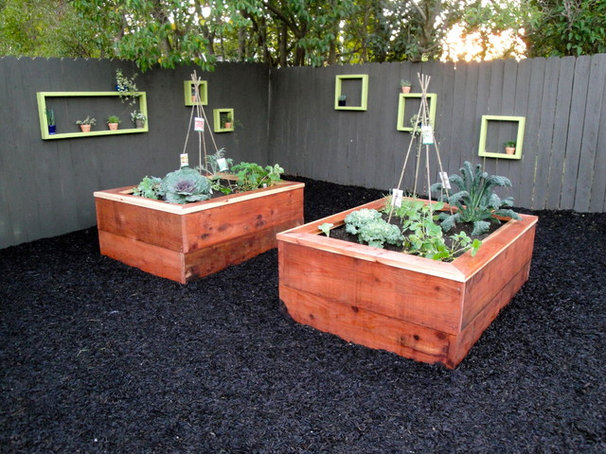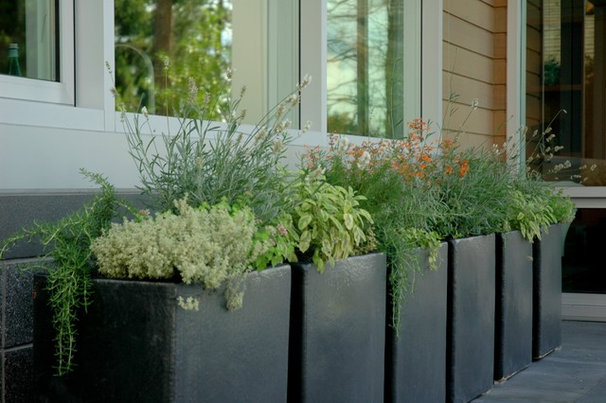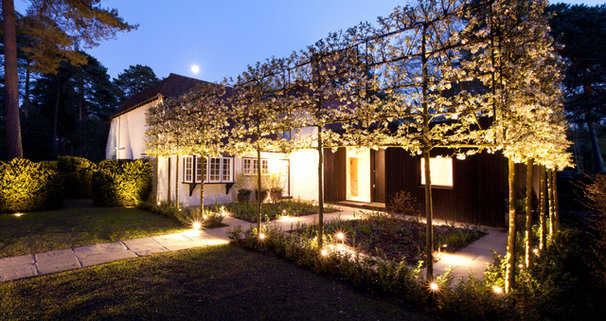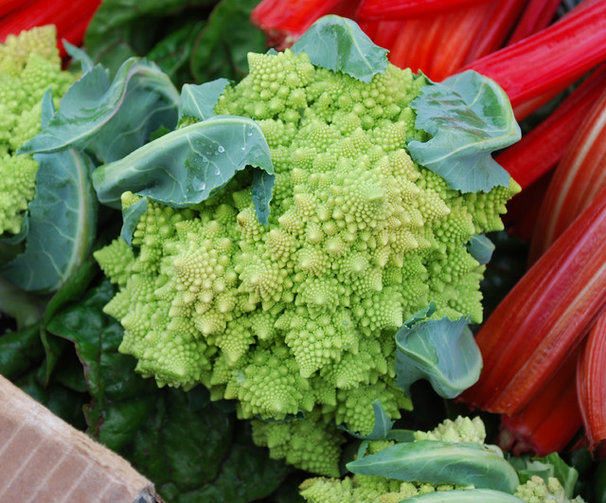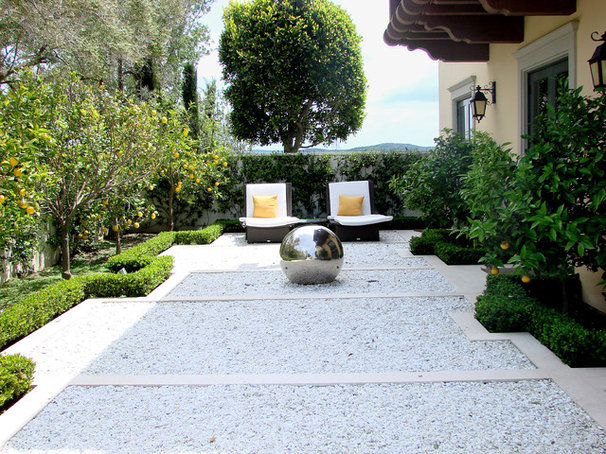“It’s always nice if you can add some edible plants to your yard, deck or garden. We usually have a few herbs ready to go that we can use while cooking. These ideas take it to a whole new level, so you may get some new and different ideas.”
Denise Buck & Ed Johnson – DC Metro Realty Team
Whether you’re designing a landscape for a backyard in Southern California or a rooftop in Manhattan, the same concepts apply: Place sprawling vegetable gardens in contemporary containers and leave lots of empty space around them so the eye has a place to rest.
Note the clean lines around the garden made with edging, a wide pea gravel path and the cool-toned painted fence in the background. These all maintain the modernist look in a yard that features a sprawling vegetable garden front and center.
Here, the long lines of the oval containers create a striking futuristic design on this Los Angeles rooftop. Again, minimalism is key — the designer used nothing but the containers and cool, neutral-toned hardscape materials to create a clean, orderly feel.
This design includes a lip, but the lip is set over the inside of the planter to maintain the clean outer line of the cubes. The lip serves a practical purpose as a place to sit or rest tools on, which is helpful in an edible garden.
See how to grow a patio-perfect berry bush
Pleaching simply means to train a row of trees or shrubs into a flat shape by tying and interlacing their branches together. It is similar to espaliering, in which individual plants are trained to grow on a flat plane, usually a wall. Pleaching and espaliering are high-maintenance approaches, but they’re a sure bet for getting fruit trees — as well as edible vines and shrubs — to conform to a contemporary design.
Asparagus, for example (which is a perennial vegetable for USDA zones 3 to 10), has a tidy appearance, with wispy fronds that are reminiscent of ornamental grasses and other species often used by modernist designers. Eggplant is also a tidy plant, and its smooth, oblong fruits look fantastic in a glossy, glazed container.
The Romanesco cauliflower and red chard pictured here are an example of the abstract artistry found in some vegetable combinations, which are quite stunning when incorporated in an edible modernist garden.
In that vein, you may want to limit your use of edibles in a modernist landscape to a small portion of the nonarchitectural part of the design. That way the food plants will form a counterpoint in a balanced larger picture, as the bright yellow lemons do on the left side of this garden.
